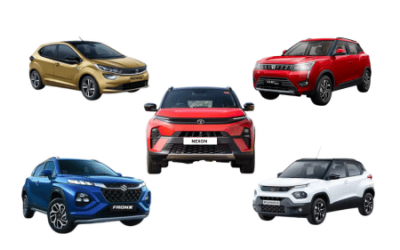In 2022, India saw a significant surge in fuel prices, leading to concerns among consumers and businesses alike. With petrol and diesel prices touching record highs, the impact was not just limited to increased transportation costs but also reverberated through the automotive sector. Rising fuel prices have historically influenced car sales, and 2022 proved to be no different, with car buyers reconsidering their purchase decisions and manufacturers adjusting their strategies to cope with the changing landscape.
This blog explores how rising fuel prices affected car sales in 2022, the factors that contributed to this shift, and how the automotive market responded to these challenges.
The Impact of Rising Fuel Prices on Consumer Behavior
Fuel prices are a key factor influencing car sales in India. As prices continued to rise in 2022, consumers began to feel the pinch, leading to changes in purchasing decisions. Several trends and behaviors emerged as a direct result of these escalating costs:
1. Shift Towards Fuel-Efficient Vehicles
With fuel prices soaring, consumers began prioritizing fuel efficiency more than ever before. Buyers sought vehicles that could provide better mileage and lower operating costs. This shift in preference led to an increased demand for compact cars, hybrids, and electric vehicles (EVs).
- Hatchbacks and Compact Sedans: These vehicles, which offer a good balance between fuel efficiency, affordability, and practicality, saw steady demand despite the price hikes. Models such as the Maruti Suzuki Swift and Honda Amaze remained popular among budget-conscious consumers.
- Hybrid Vehicles: As fuel prices continued to rise, hybrid vehicles gained traction. Cars like the Toyota Corolla Altis Hybrid and Honda City Hybrid gained attention for their ability to offer better fuel economy without sacrificing performance.
2. Increased Interest in Electric Vehicles (EVs)
One of the most notable shifts in 2022 was the growing interest in electric vehicles (EVs). As petrol and diesel prices continued to climb, more buyers started looking for alternatives that offered long-term savings and less reliance on conventional fuels.
- Ola Electric, Tata Nexon EV, and Mahindra Electric saw an uptick in sales, with consumers considering EVs as a viable option to offset rising fuel costs. The idea of lower running costs and fewer concerns about fluctuating fuel prices made EVs a more attractive option for urban commuters.
- Government Incentives: The Indian government’s push for EV adoption through schemes like FAME II and various state-level incentives further accelerated the shift towards electric vehicles.
3. Slower Growth in Premium Car Sales
The rise in fuel prices also had an impact on the sale of larger, fuel-thirsty vehicles like SUVs and luxury cars. Although the demand for SUVs remains strong in India, the soaring fuel costs caused some buyers to reconsider their purchase decisions, especially for premium and high-performance models that offer lower fuel efficiency.
- Luxury Car Sales: Premium car manufacturers such as Mercedes-Benz, BMW, and Audi saw a slight dip in sales in 2022, as high fuel costs discouraged potential buyers. Additionally, with the increased focus on sustainability and fuel economy, more consumers turned their attention to brands offering hybrid or electric options.
4. Lower Sales in Commercial Vehicles
The impact of rising fuel prices was also felt in the commercial vehicle segment, particularly in sectors like logistics and public transportation. Higher fuel costs led to increased operating expenses for fleet operators, which in turn affected their purchasing decisions.
- Demand for Smaller and More Fuel-Efficient Commercial Vehicles: Fleet operators were more inclined to purchase smaller commercial vehicles that offered better fuel efficiency to reduce overall operational costs.
- Electric Three-Wheelers: In cities like Delhi and Mumbai, electric three-wheelers gained popularity as a cheaper and more fuel-efficient alternative for last-mile delivery, urban transport, and cargo movement.
How Automakers Responded to Rising Fuel Prices
In response to the changing market dynamics and consumer preferences, automakers had to adapt quickly to maintain their sales figures and appeal to a more cost-conscious customer base. Some key responses included:
1. Introducing More Fuel-Efficient Models
Car manufacturers began focusing more on fuel-efficient models, especially in the hatchback, sedan, and compact SUV segments, where consumers expect the best mileage. Companies like Maruti Suzuki, Hyundai, and Tata Motors introduced updated versions of their popular models with improved fuel efficiency.
- Maruti Suzuki: The company has long dominated the Indian market with its fuel-efficient vehicles. In 2022, they launched the Celerio and updated Swift models with better mileage, keeping pace with consumer demand for fuel efficiency.
- Hyundai: Hyundai also introduced improved variants of models like the i20 and Creta, focusing on hybrid and fuel-efficient technologies to cater to the changing needs of buyers.
2. Increased Focus on Electric and Hybrid Technologies
As the electric vehicle market grew, automakers like Tata Motors and Mahindra pushed forward with EV and hybrid models to reduce dependency on fossil fuels and offer consumers a more sustainable, long-term solution to rising fuel costs.
- Tata Motors: Tata’s introduction of the Nexon EV and Tigor EV in 2022 was a direct response to the growing demand for electric vehicles. These models offered a great combination of affordability, performance, and zero-emission driving.
- Mahindra & Mahindra: Mahindra also made significant strides in expanding its electric vehicle lineup with models like the e2o Plus and eVerito, aimed at urban consumers looking to make the switch to greener alternatives.
3. Launch of CNG Variants
Another response from automakers to the rising fuel prices was the introduction of CNG-powered variants of popular models. CNG is a more affordable and cleaner alternative to petrol and diesel, and automakers like Maruti Suzuki and Tata Motors capitalized on this growing demand by offering CNG versions of their popular cars.
- Maruti Suzuki: The company introduced CNG variants of models like the Swift, Dzire, and Baleno, which quickly gained popularity due to the lower running costs of CNG vehicles.
- Tata Motors: Tata launched the Tata Altroz CNG and Tata Tiago CNG, providing buyers with an affordable, fuel-efficient, and eco-friendly alternative to petrol and diesel-powered cars.
4. Promotions and Discounts to Boost Sales
To counter the negative impact of rising fuel prices on overall sales, automakers also rolled out attractive discounts, financing options, and promotional campaigns. By offering limited-time discounts or special financing schemes, car manufacturers attempted to ease the financial burden on potential buyers, encouraging them to go ahead with their purchase despite the high fuel prices.
Challenges for the Indian Automotive Market
While the rise in fuel prices created several opportunities for automakers to introduce fuel-efficient models and expand the EV market, it also posed certain challenges for the overall automotive industry:
- Slow Recovery from COVID-19: The automotive sector was already facing challenges in terms of production delays, chip shortages, and fluctuating demand due to the COVID-19 pandemic. Rising fuel prices compounded these challenges, slowing down the recovery process.
- Impact on Affordability: With inflation and rising fuel prices, the cost of living increased for many Indians. For the average consumer, this meant a reduced budget for car purchases, leading to a decline in demand for non-essential vehicles and premium models.
Conclusion: Navigating a High-Fuel-Cost Future
Rising fuel prices in 2022 undeniably had a profound effect on car sales in India. While the automotive industry faced challenges, it also saw an accelerated shift towards fuel-efficient vehicles, electric mobility, and alternative fuels like CNG. Consumers became more discerning, seeking vehicles that offered better mileage, lower running costs, and long-term sustainability. In turn, automakers responded by rolling out new, more efficient models, as well as increasing investments in electric and hybrid technologies.
As fuel prices remain volatile, the market for electric and hybrid vehicles is likely to continue growing. At the same time, manufacturers will need to balance the demand for fuel-efficient models with the need to cater to other consumer preferences, such as style, technology, and performance. Ultimately, the rise in fuel prices may have acted as a catalyst for positive change, pushing the Indian automotive market toward more sustainable and affordable transportation solutions.
0




